12/6/21 – Yesterday, in less than 24 hours, we received a boatload of snow…Final total as of this morning came in at 15.5″. -Jessica
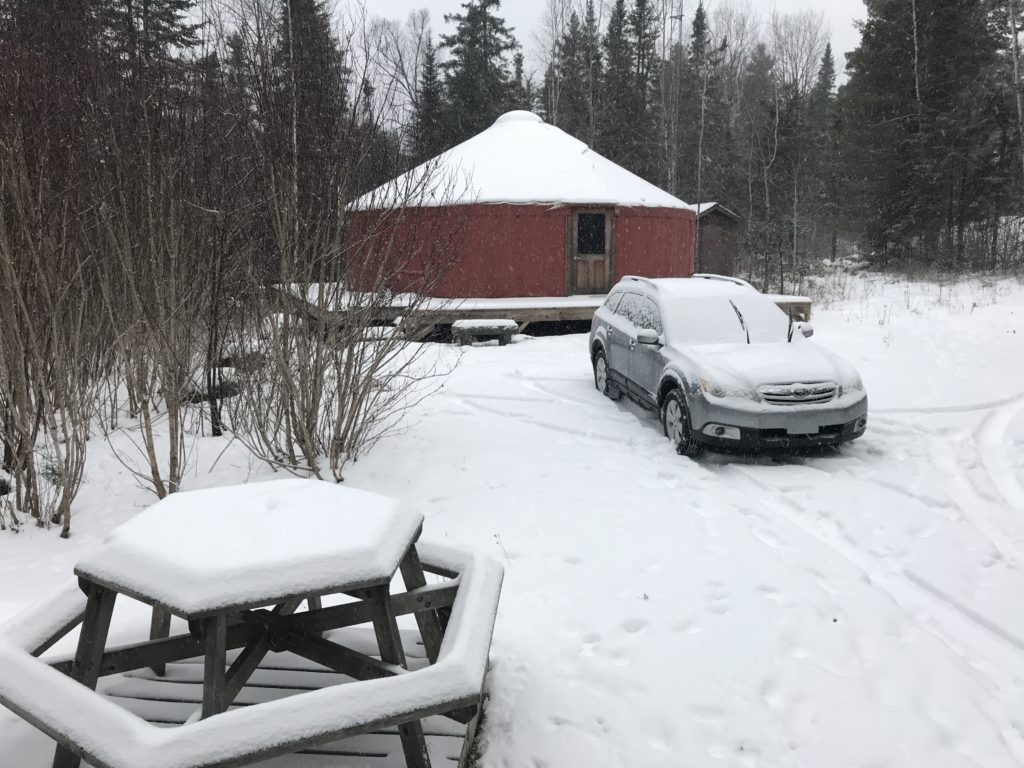
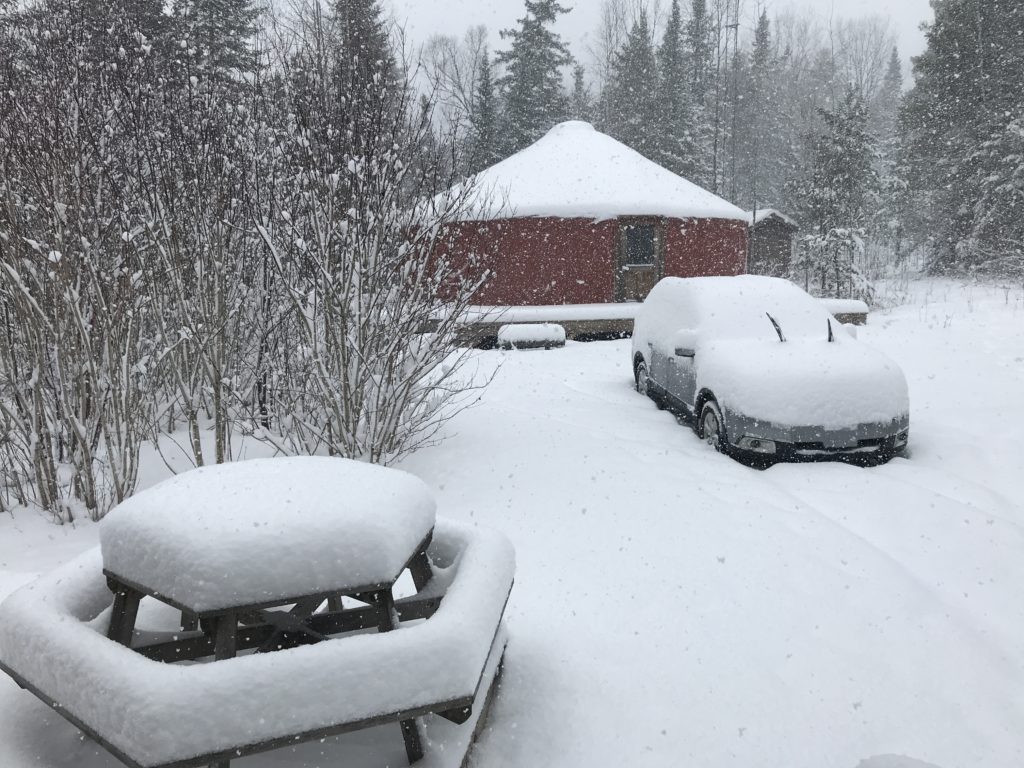
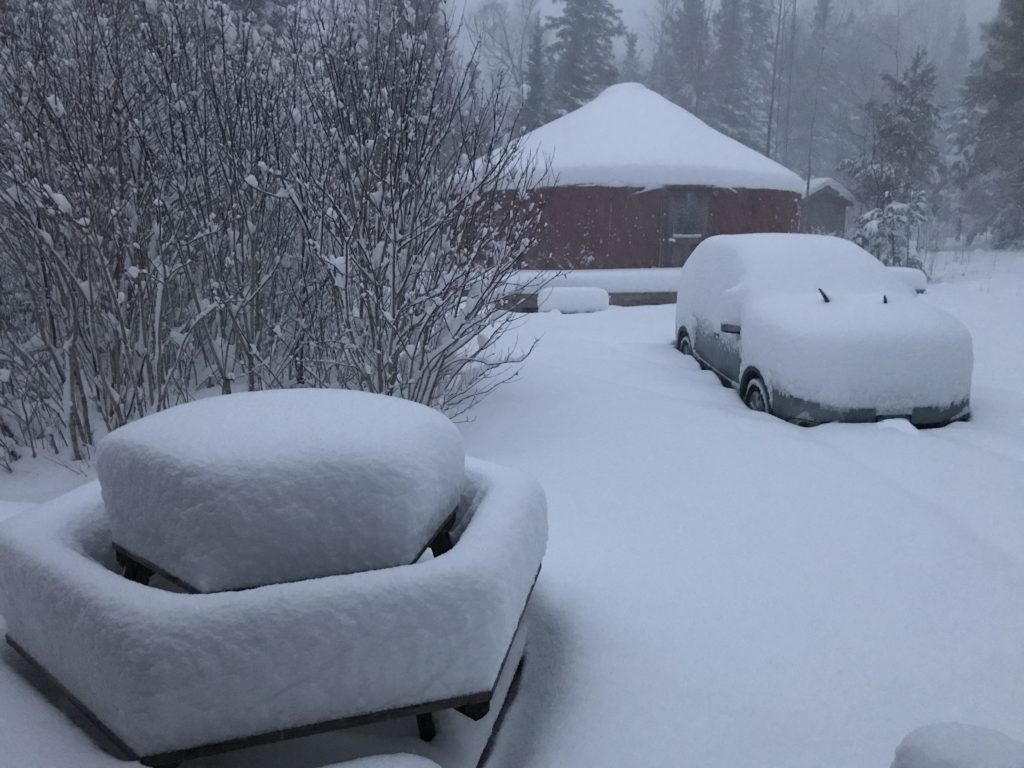
12/6/21 – Yesterday, in less than 24 hours, we received a boatload of snow…Final total as of this morning came in at 15.5″. -Jessica



12/4/21 – As the days get shorter and shorter I’m always excited to bring a piece of the outdoors in. Around mid September I begin eyeing up each balsam I pass trying to determine if it meets specs. When the day finally comes to go get my tree however, they really aren’t in short supply. It’s hard to go wrong with the unique character of wild cut balsams.
A couple days ago I set off on my quest. A very pleasant jaunt through the woods followed, and eventually the clouds parted and a beam of sun shown down on the perfect tree. Once back to the house the customary dance of squeezing the tree in and out of the front door commenced, but eventually (after measuring once, cutting three times) the tree fit perfectly in a place of prominence.
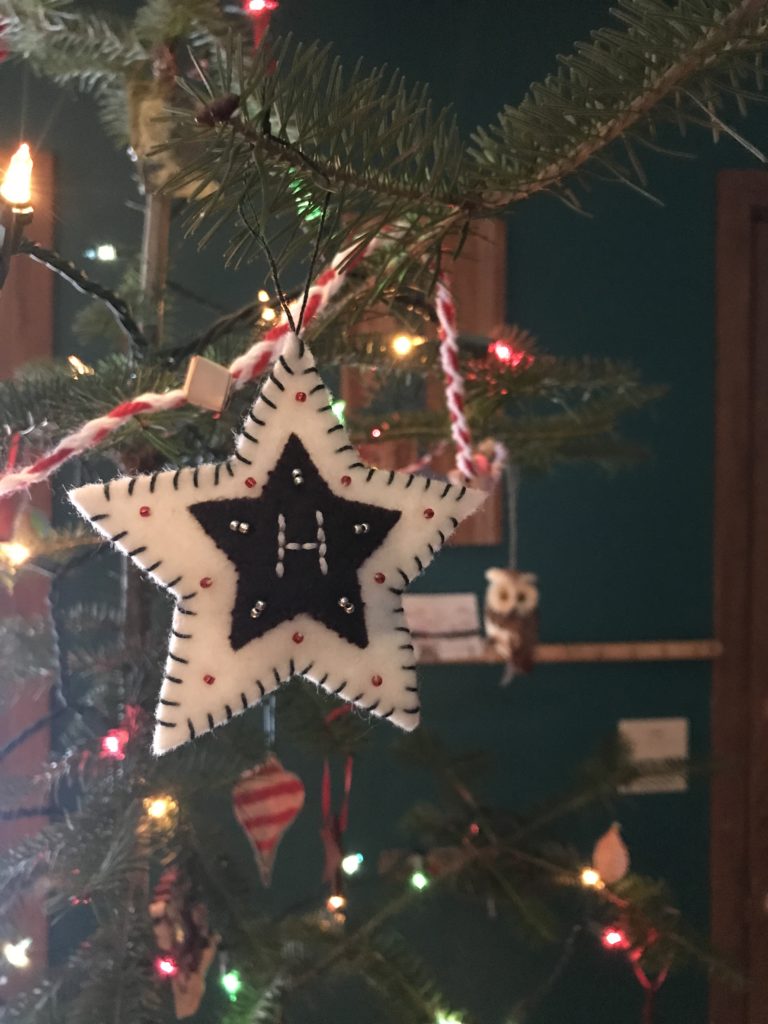
If you find yourself in the area of the Superior National Forest these next couple weeks and want to bring yourself home one of these beauties, tree cutting permits are available online through www.recreation.gov for just $5. Happy tree hunting! -Jessica
11/19/21 – The holiday shopping season is upon us! Tomorrow only, check out our Instagram page beginning at 9am for details on how to purchase some sweet Sawbill swag with free shipping. If you aren’t on social media, but still want to shop, we also have a number of goodies available on our online store. -Jessica
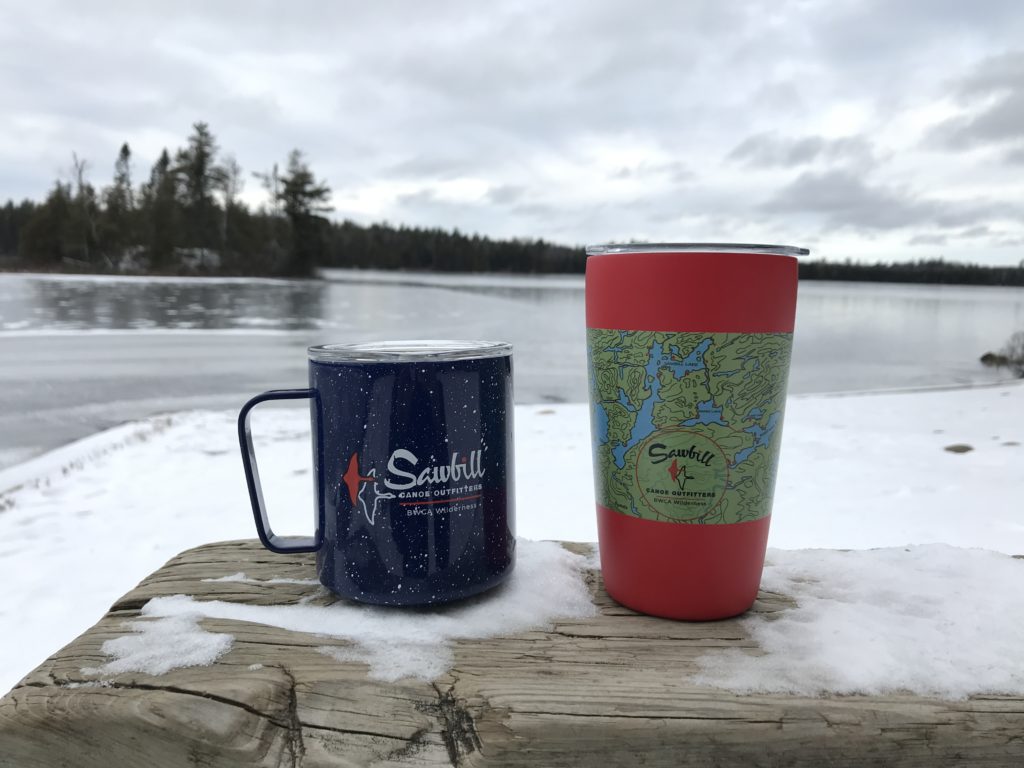
11/16/21 – We have ice! Unfortunately the freeze up is happening on a relatively windy day which doesn’t bode well for early season ice conditions. As of 3pm ice covers much of what we can see from the south end of the lake, but a number of open water patches persist. -Jessica
11/11/21 – If you were trying to reach us in the past 24 hours you may have noticed our phone lines were down (along with our internet). We continue to work on a permanent fix, but are now able to receive emails and phone calls. Tragically our backup option does not have the capacity to stream online videos or music…Oh the horror! In the meantime I’m feeling lucky to have a good book, old fashioned radio, and a DVD player. -Jessica
11/1/21 – It’s been a while since our last post. The month of October flew by as we were busy wrapping up loose ends in preparation for winter’s arrival. Some of the highlights included wood stacking, stacking wood, tucking the canoes into our pole building, stacking wood, painting picnic tables, winterizing the store, and more stacking of wood. -Jessica

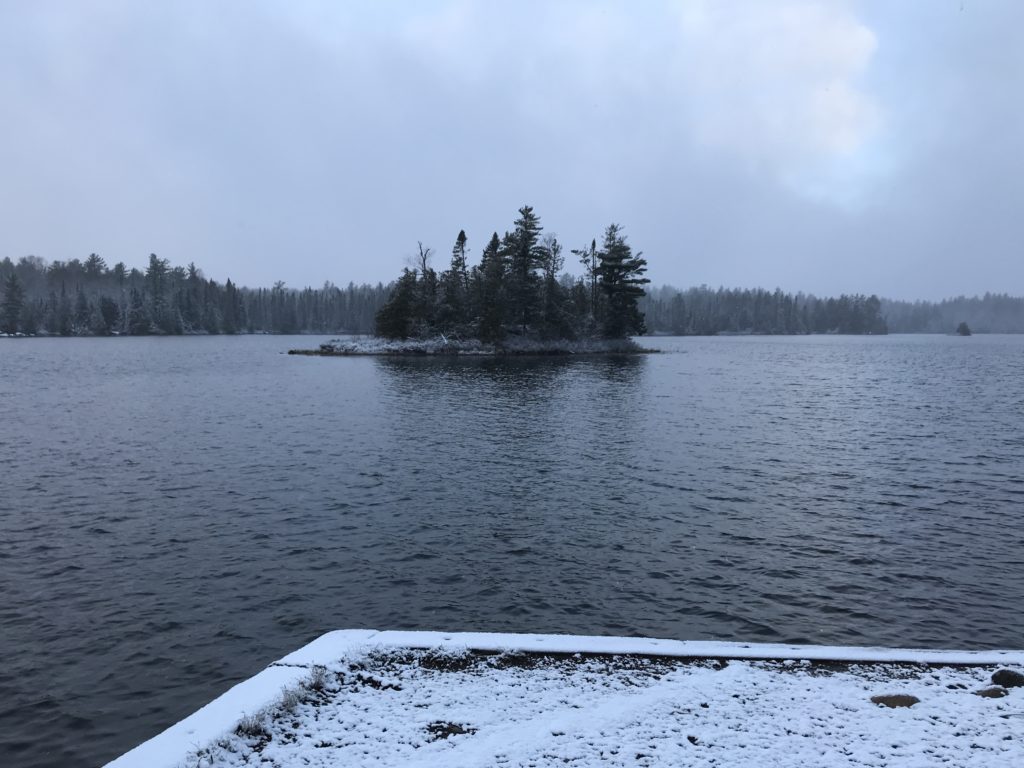
10/3/21 – We received notice late Friday afternoon that the Forest Service has lifted the BWCA closure area, effective immediately. The Whelp and John Ek fires have not shown any smoke for a couple of weeks, and we’ve received a more normal amount of rainfall over the last month. Shorter days and cooler temperatures are also contributing to the lessening fire activity and fire danger. This means that the Kelso Loop, Louse River, and Lady Chain routes are now open for travel.
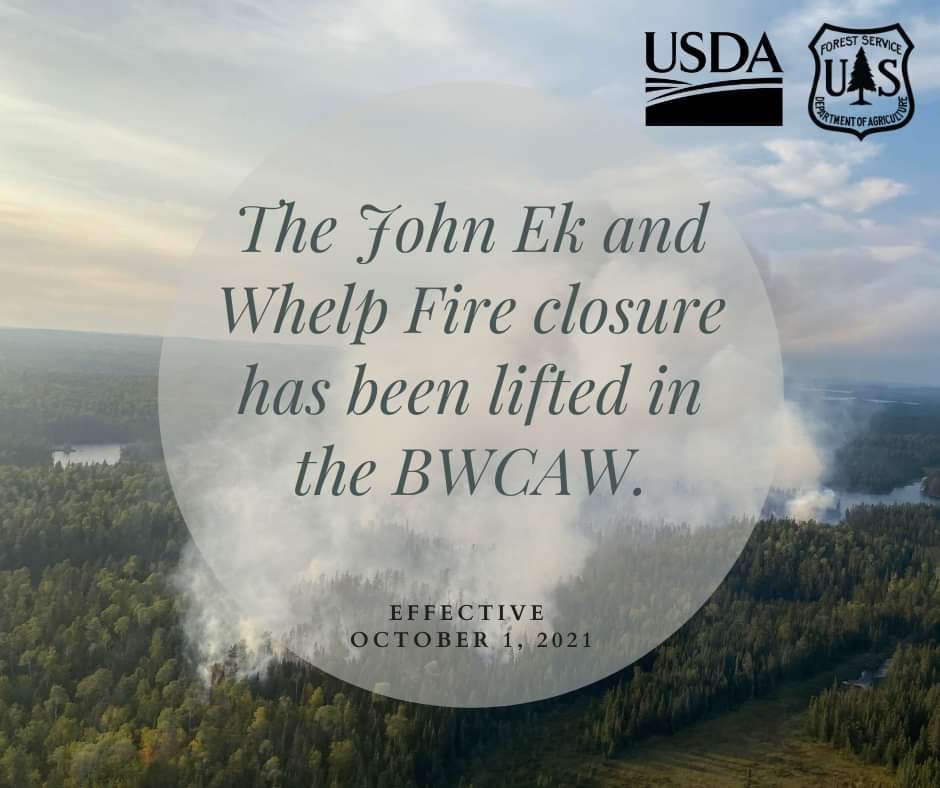
The Whelp fire never grew beyond 50 acres, and burned entirely in the remote wooded area north of Phoebe and Grace Lakes. The fire never reached any campsites or portages, so anyone travelling in the area this fall or in the coming seasons won’t see any evidence of this relatively small fire .

Grouse season is in full swing up here, with several Sawbill crew members partaking this year. It’s been a productive endeavor and we’re looking forward to some grouse dumplings soon!
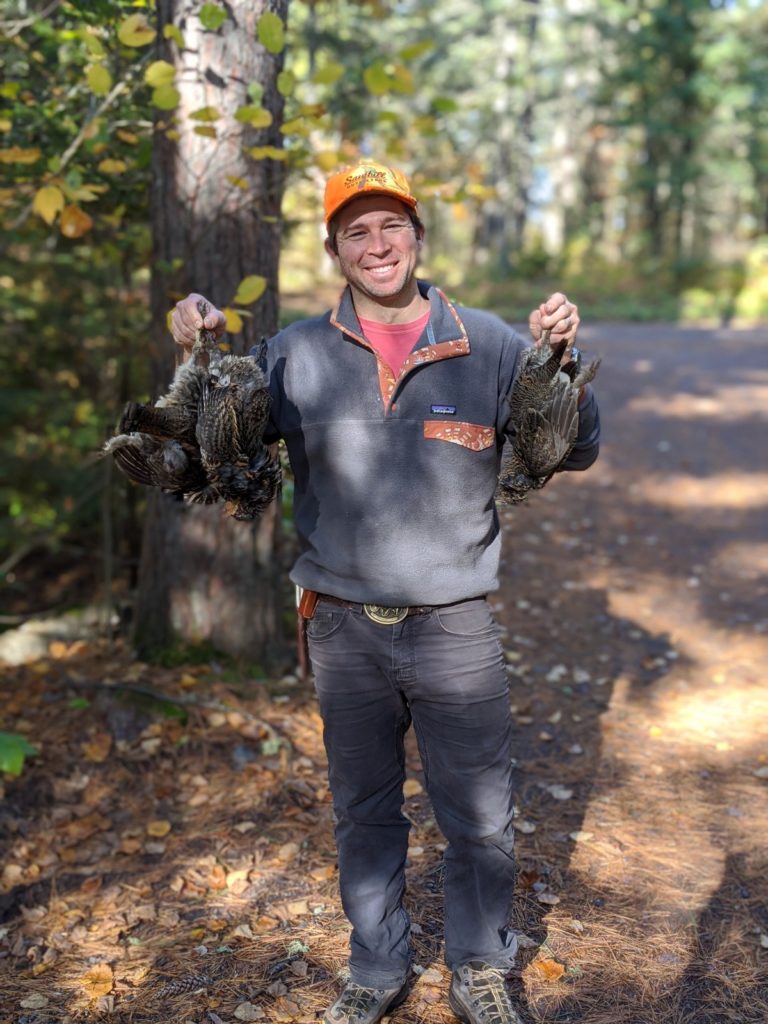
The more typical fall weather has also led to an explosion of fungi in the northwoods. It’s easy to get distracted by the brilliant fall colors, but the variety of mushrooms poking up from the ground and on the tree trunks and stumps really demand some attention.
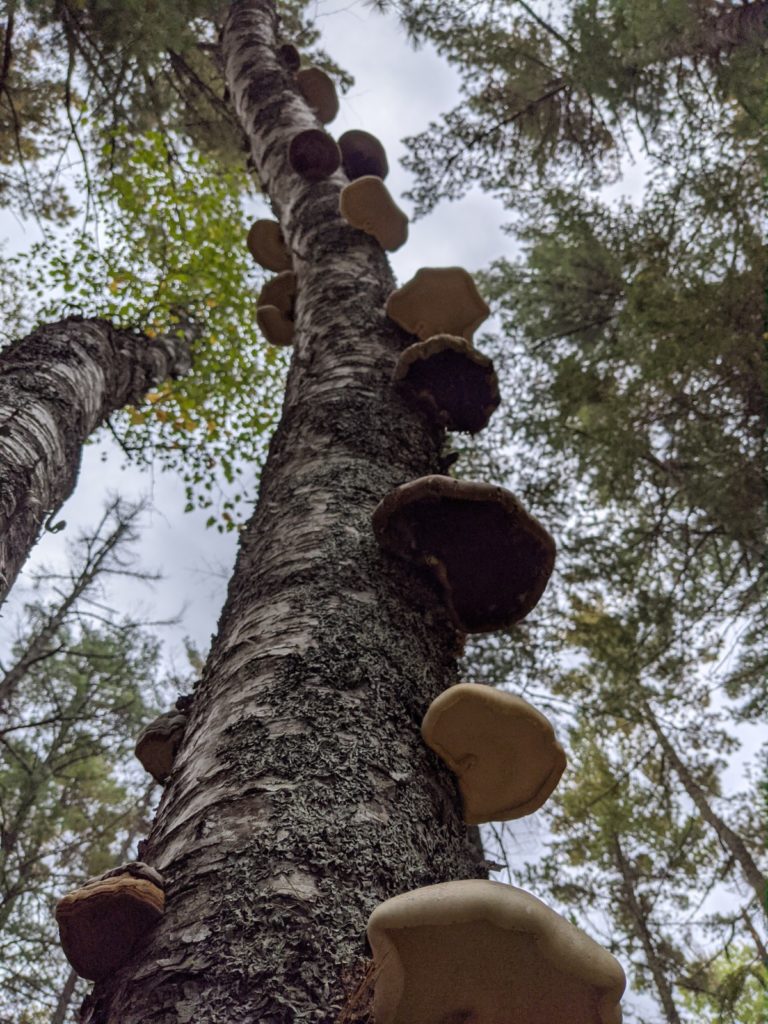
As of October 1st, the quota permit season in the BWCA has come to a close. From now until May, you only need a free self-issue permit to enter the BWCA, whether it’s a day trip or an overnight trip. These permits are found in boxes at entry point lakes, or at Ranger Stations. Here at Sawbill, we’ll be open regular hours until October 7th. After that, we’ll be here working on our fall wind down projects, likely with a note on the door that says find us if you need a canoe!
-Clare
9/25/21 – September is winding its way to a close, and fall has certainly arrived here at Sawbill. The leaves are changing, the weather is cooler and wetter, and grouse hunters are prowling the woods. After the month long rollercoaster of fire risk and closures, the slowing pace and transition to fall projects is more welcome than ever. We had some excitement last week when the littlest outfitters, Kit and Sig, discovered a hole in the ground down by the canoe launch on Sawbill. Grandma Cindy quickly inspected to make sure it wasn’t a ground hornet nest (that’s another story) and much to her surprise she discovered a different sort of nest!
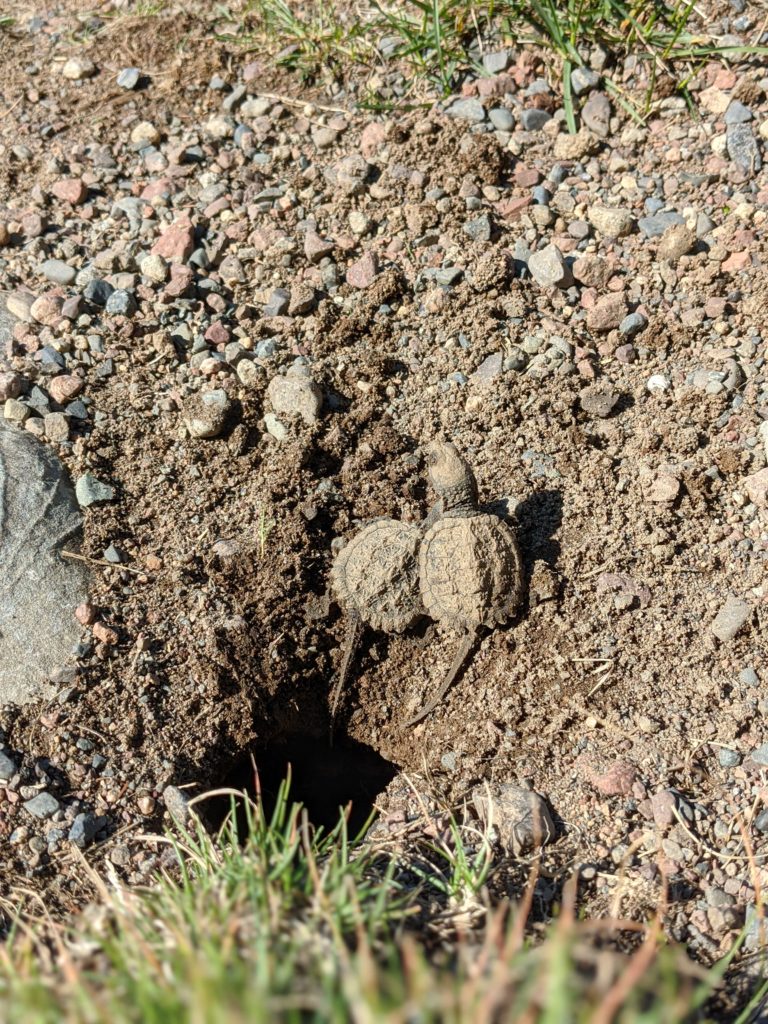
For years we’ve all watched as a big mama snapping turtle (or turtles, it’s hard to tell) laid her eggs down by the shore on Sawbill. Frequently, we later find those nests dug up, likely a meal for the neighborhood fox. None of us recall ever being present to see the tiny turtles hatch and find their way to the lake! Leave it to the curious toddlers to investigate everything. We were able to watch them throughout the day as they crawled their way out and hustled down to the water, where they got their bearings and swam off into the distance.
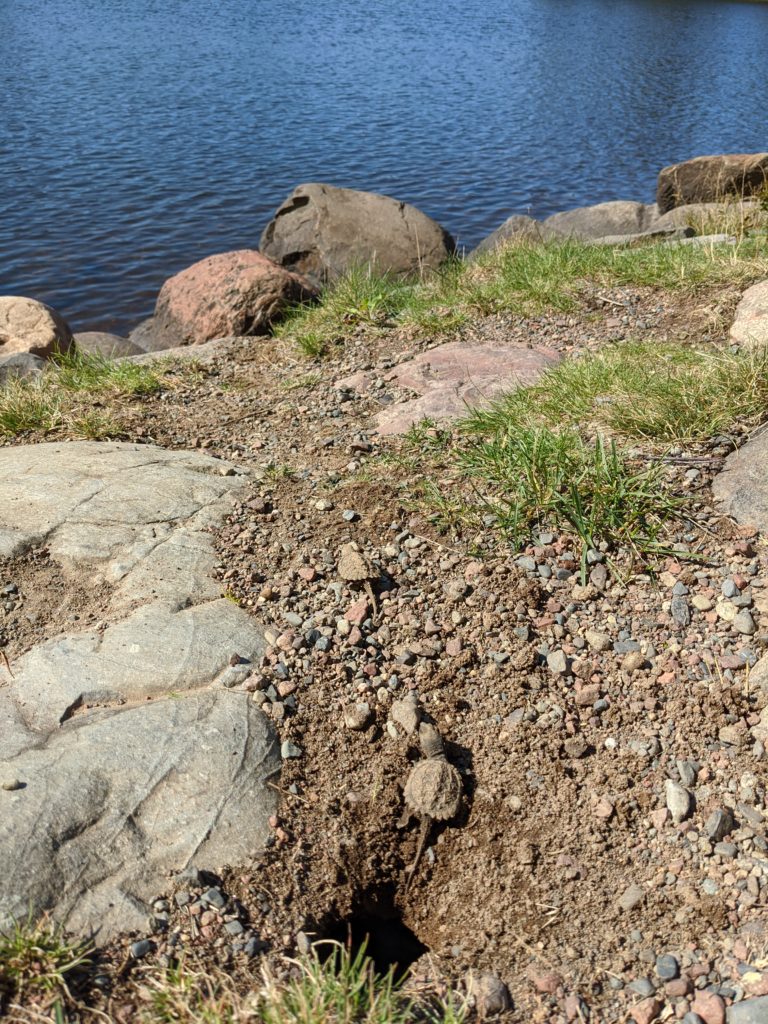
We were also pleased to visit with the group of wooden canoe enthusiasts during their annual visit to the Sawbill campground. Most visitors hold kevlar as the gold standard for BWCA canoes, but there’s something to be said for the craftsmanship showed in these beautiful wood boats.
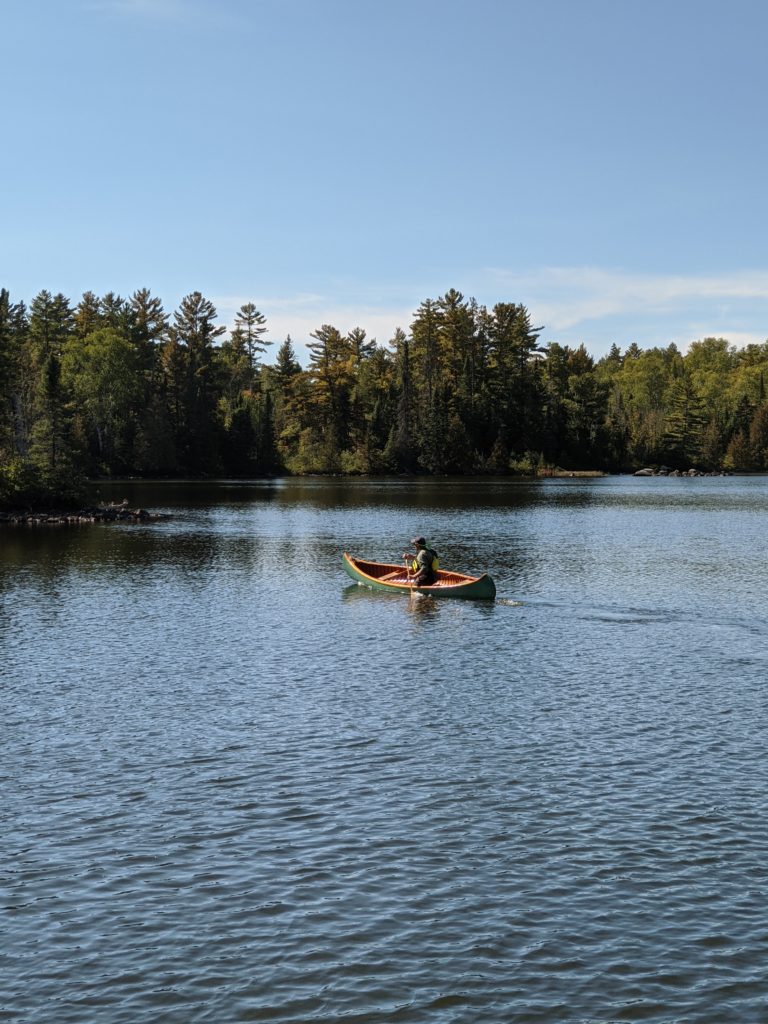
Kit Shirley has had a big September, she has started Kindergarten at Sawtooth Elementary in Grand Marais. So far she loves learning, especially Spanish class, and loves making new friends. She and her parents are cruising through audiobooks during the commute, and enjoying all the beautiful sunrises and fun animal sightings.
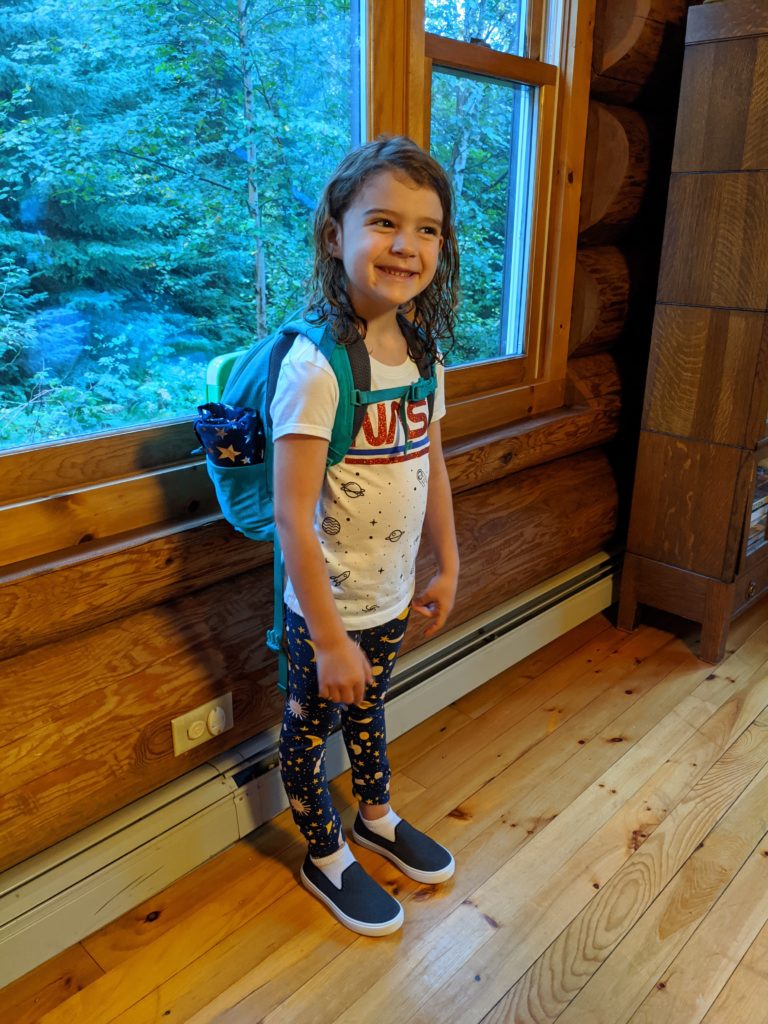
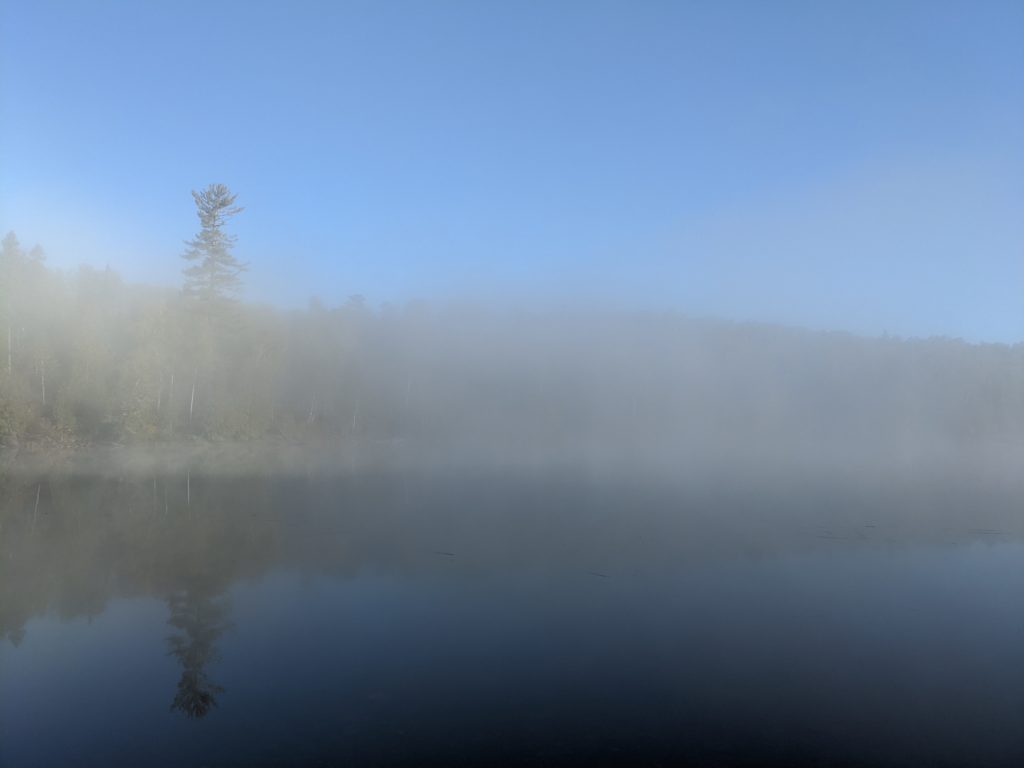
-Clare
9/18/21 – The Forest Service has lifted the fire ban in the Superior National Forest, including the BWCA wilderness. Thanks to some recent rains, cooler temps, and shorter days the fire danger has lessened. We are still experiencing a severe drought so while fire conditions have calmed down, things are still pretty dry with low water levels. We so appreciate everyone’s diligence in keeping our forests and homes safe during this extreme year!
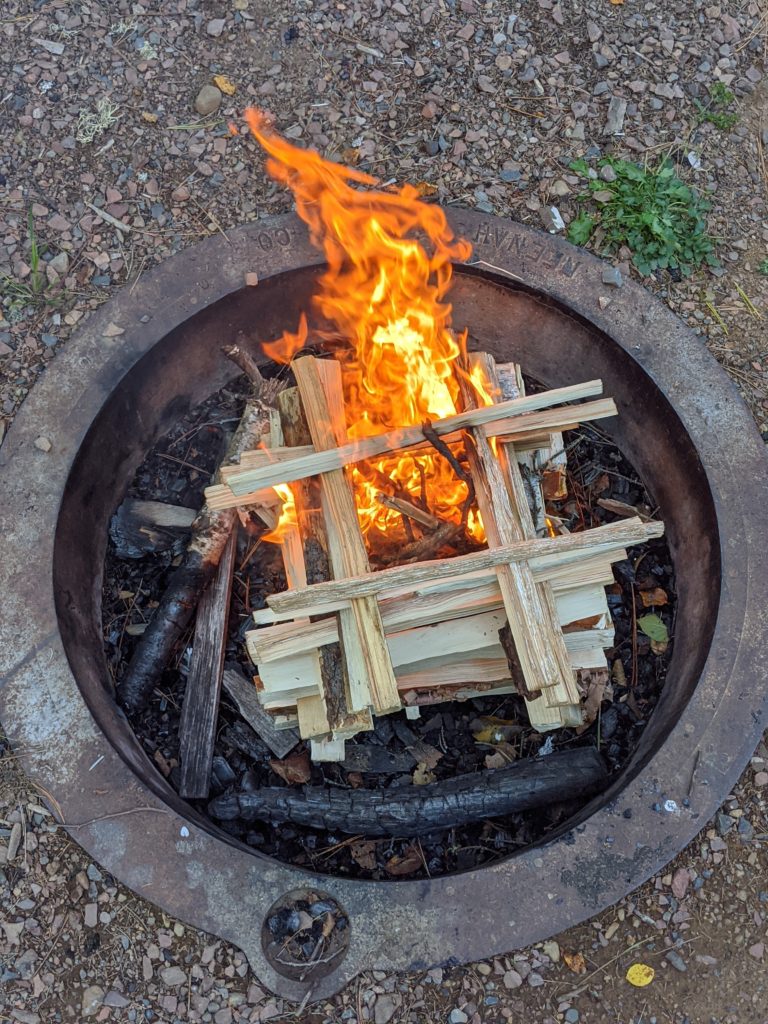
Even though the fire ban has been lifted, there is still a closure area within the BWCA. This means that the area shown on the map below is closed to all travel, including day-use. If you have any routing questions, don’t hesitate to ask!
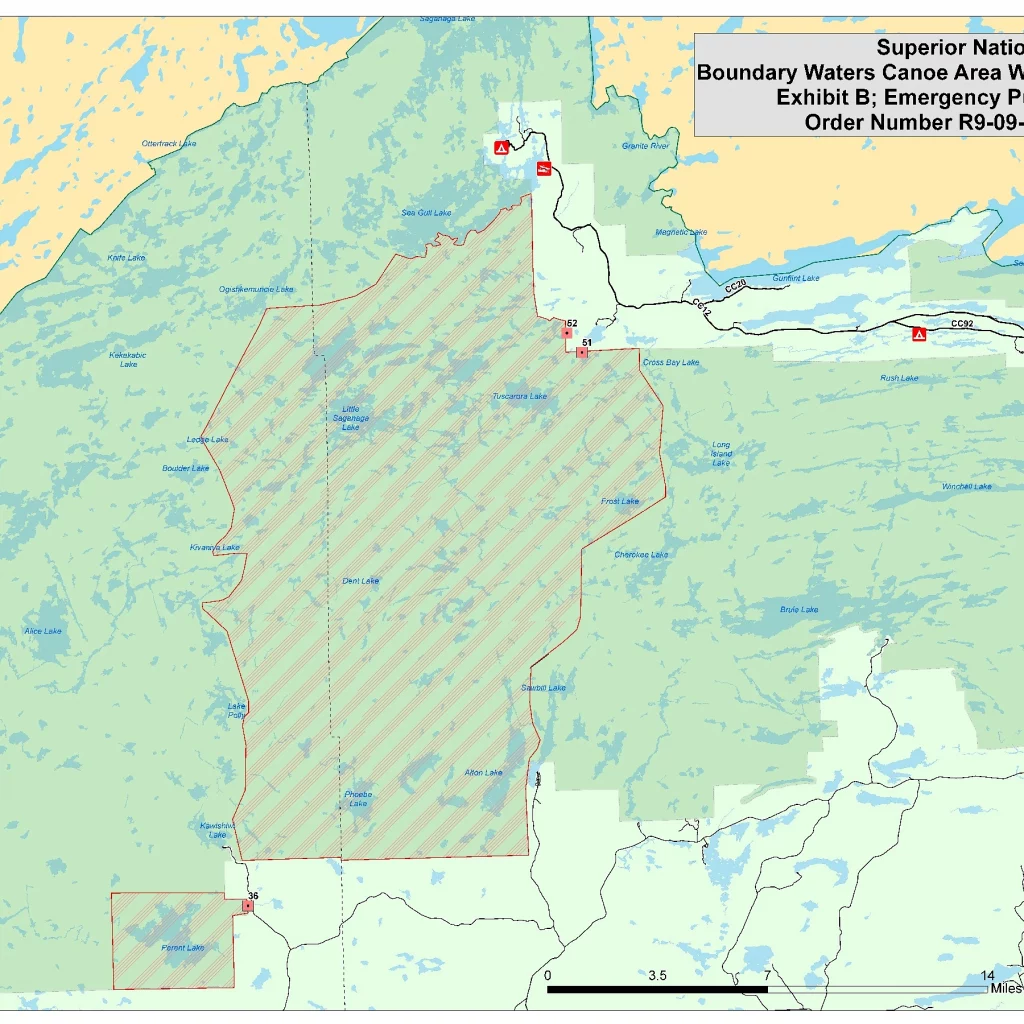
-Clare

9/8/2021- Things are looking up for those of us that have been missing fires this summer! The SNF is going to be loosening restrictions on the forest, thanks to a change in the seasons. Starting September 9th, campers may have fires in designated fire grates in fee campgrounds! This is due to the dropping temperatures and the recent rain (Hooray!) This season has been touch and go because of the fires but if we work together and continue to follow restrictions we can safely enjoy campfires. On a personal note, it has been extremely encouraging how many campers who have celebrated the rain with me, so thank you to all of you who have kept a positive attitude when camping in the rain! That being said, Minnesota is still going to have drought conditions and with the right fuel and weather conditions, more fires could ignite. We ask you to take this in consideration and teach younger campers or first timers proper fire etiquette:
– Always keep an eye on your fire and if you leave the campsite, put the fire out.
– Keep fires to a controllable size, smaller fires are easier to put out.
-Have water near you before you start the fire, this makes it easier to put out a fire that gets out of hand.
-To make sure a sudden gust of wind doesn’t turn your campfire into a wildfire, keep anything flammable, including unused firewood away from the fire grate.
– Make sure you add enough water to the fire so that all coals are extinguished.
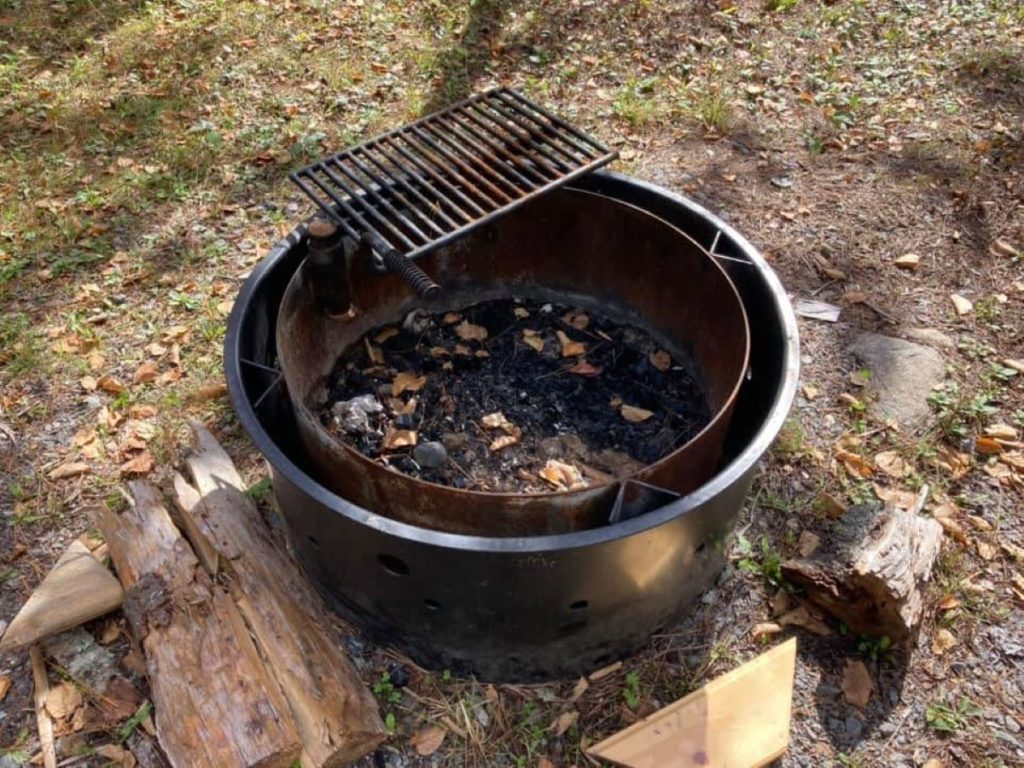
What is allowed?
What is restricted?
More information can be found on the Superior National Forest webpage along with this tab for the alerts and notices page.
-Diana